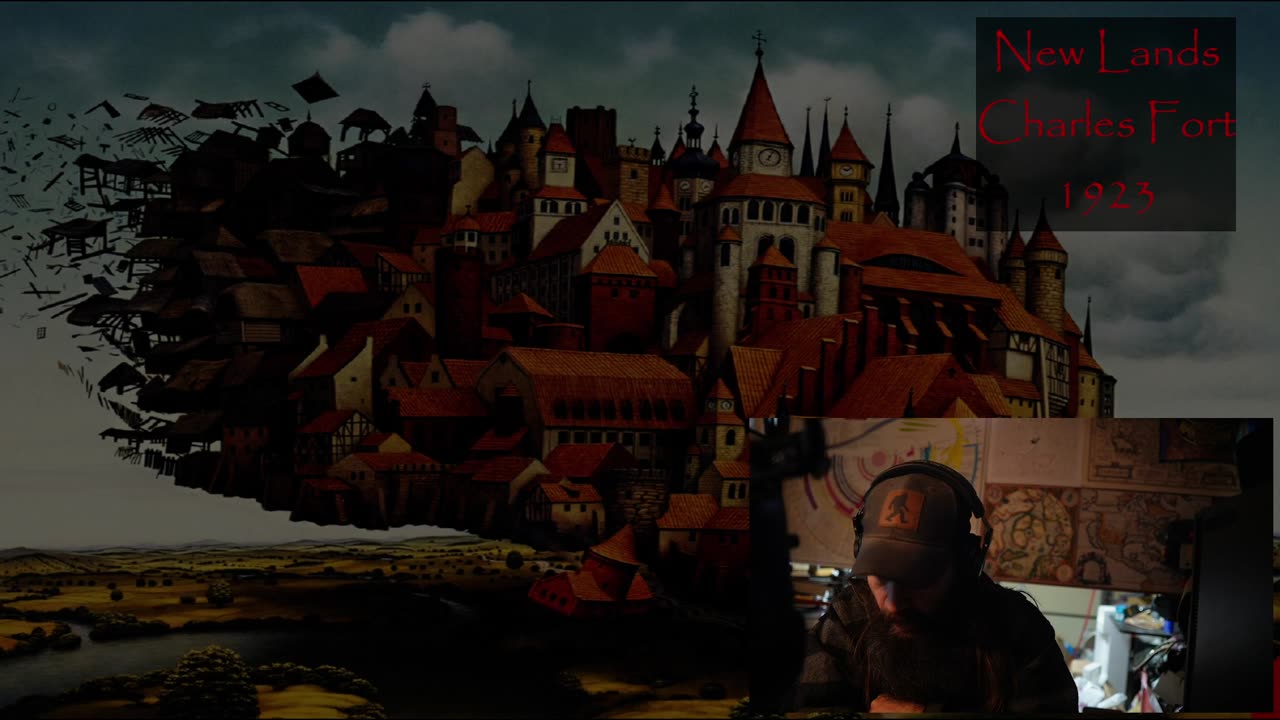Premium Only Content

New Lands - C. Fort; 1923 - 20.2
New Lands - C. Fort; 1923 - 20.2
The video explores various astronomical observations and theories about the Moon, particularly focusing on its habitability, the mysterious lights observed in the crater Plato, and potential architectural formations on its surface. It discusses historical claims about lunar cities and the interpretation of visible features and lights as possible signals rather than mere geological phenomena.
Key Points:
Moon's Atmosphere and Habitability
The Moon has been debated by astronomers regarding its atmosphere and habitability. Evidence suggests it has virtually no atmosphere, making it inhospitable for life as we know it.
Historical Observations of Lunar Cities
In the 1820s, astronomer Grian claimed to have discovered a city on the Moon, describing its streets and structures. Critics and further examinations have both supported and dismissed these observations.
Unusual Formations on the Moon
Several peculiar geological formations on the Moon have been cited as resembling architectural structures, including a formation suggesting a cathedral-like structure and geometrical patterns resembling Greek letters.
Mysterious Lights in Crater Plato
Astronomers have noted unusual lights within the crater Plato, observing patterns and brightness variations that they speculated could be non-volcanic signals or communications.
Patterns of Lights as Communication
The fluctuations and characteristics of these lights have led to theories suggesting they may represent a form of communication, with past observers documenting these anomalies meticulously.
Scientific Community's Reactions
The scientific community has a rich history of both skepticism and intrigue regarding these lunar observations, with some dismissing the findings while others believe in their significance.
-
 LIVE
LIVE
Adam Does Movies
5 hours agoAsk Me Anything - Live!
114 watching -
 LIVE
LIVE
Flyover Conservatives
20 hours agoFollow the Money: $4.7 Trillion in Government Fraud EXPOSED!; Flu Shots, Fear & Big Pharma Lies—What They DON’T Want You to Know - Dr. Stella Immanuel | FOC Show
322 watching -
 LIVE
LIVE
Anthony Rogers
1 day agoEpisode 354 - Current Events, Weather, and Other Clickbait
61 watching -

Producer Michael
5 hours agoTHE HOTTEST FRAGRANCES FOR 2025!
56 -
 18:44
18:44
Clownfish TV
5 days agoHollywood Has a DEI Temper Tantrum!
1.43K7 -

The StoneZONE with Roger Stone
1 hour agoRoger Stone Provides Crucial Update On Classified JFK Assassination Docs | The StoneZONE
6183 -
 1:09:44
1:09:44
Slightly Offensive
2 hours agoALMOST SERIOUS: How Mass Legal Immigration DESTROYED Australia | Guest: Maria Zeee
10.6K3 -
 54:43
54:43
LFA TV
1 day agoTrump vs. Karl-Theodor zu Guttenberg | TRUMPET DAILY 2.18.25 7PM
11.5K4 -
 2:02:21
2:02:21
Revenge of the Cis
7 hours agoEpisode 1449: Boo This
55.7K10 -
 1:20:31
1:20:31
Awaken With JP
7 hours agoWiping Hard Drives, Hire a Criminal Defense Lawyer - LIES Ep 79
95.5K59